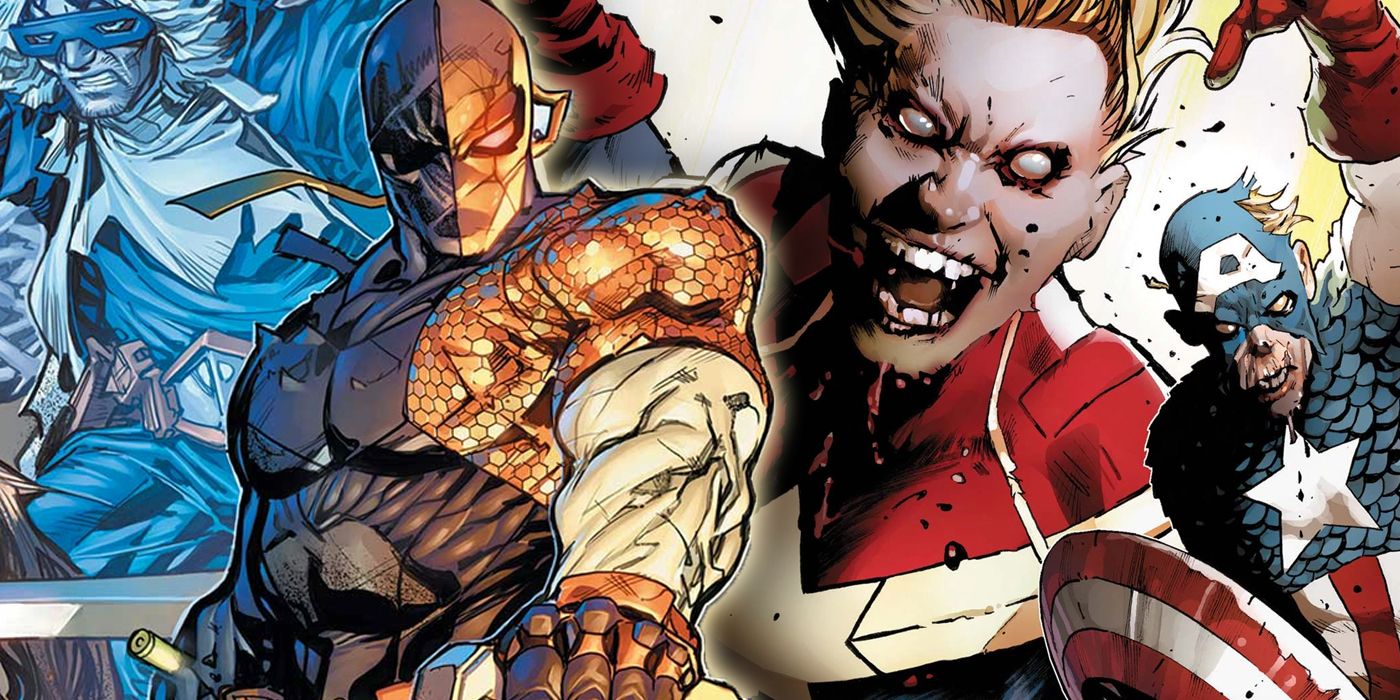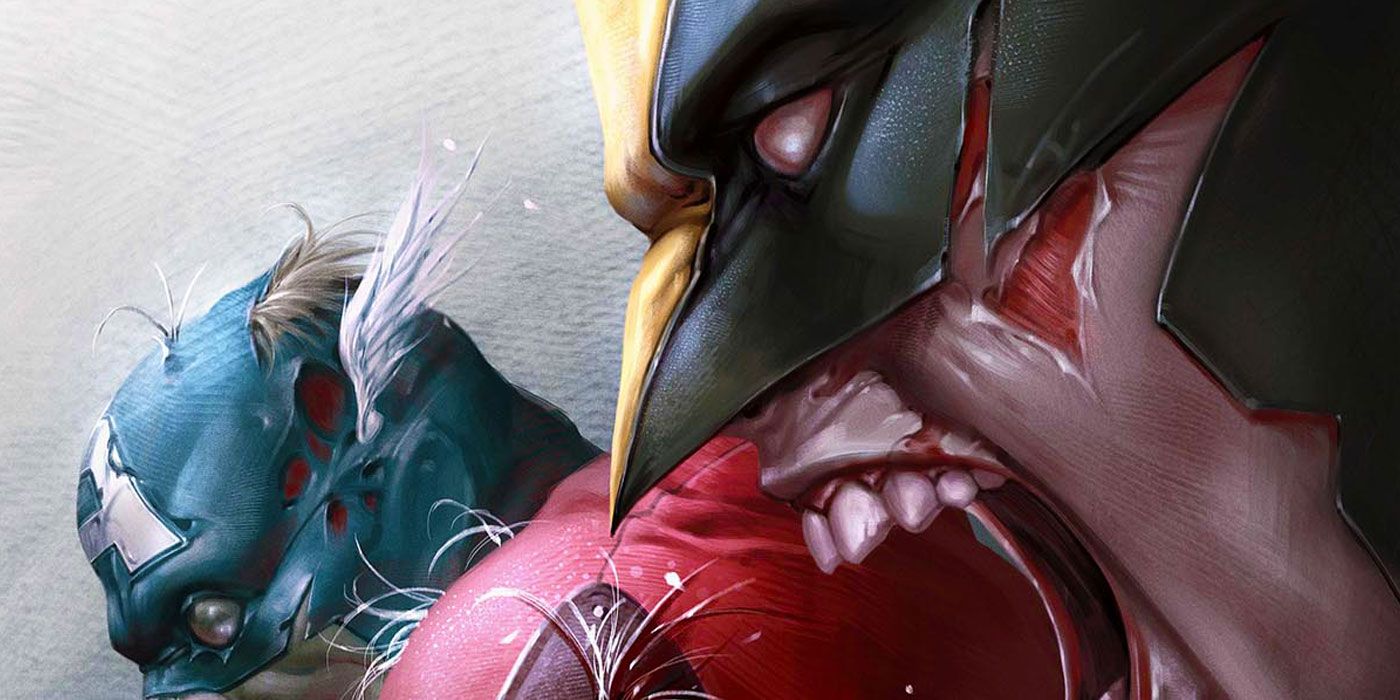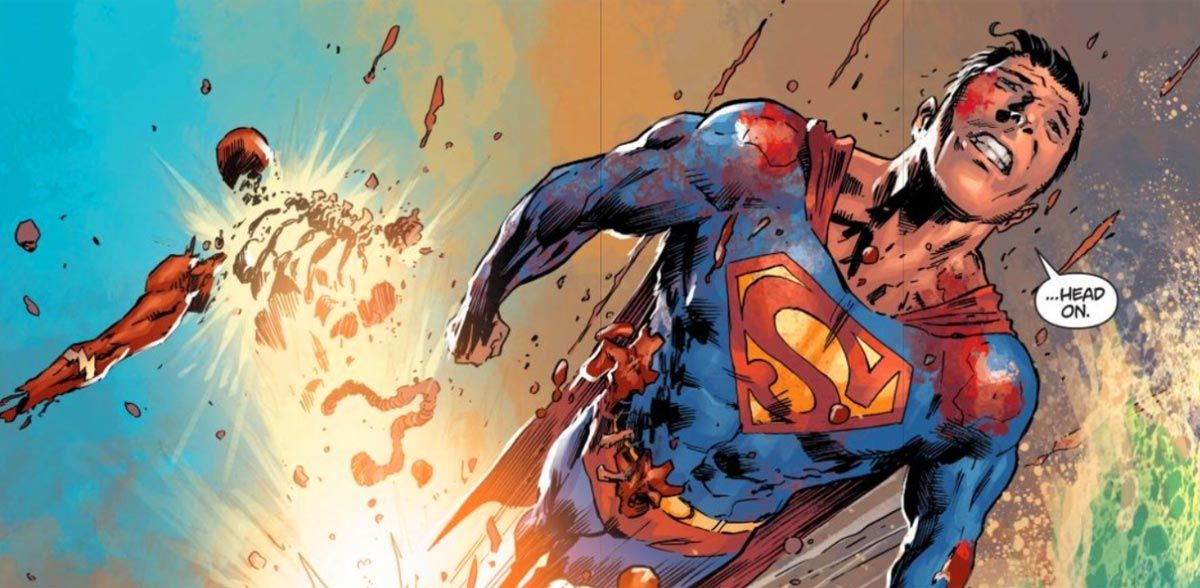Both DCeased and the Marvel Zombies franchises tackle the concept of superheroes trying to survive the end of the world via an infectious disease that corrupts anyone it comes in contact with, even established superheroes. Outside of featuring the respective rosters of the Marvel and DC Universes, the two concepts might seem practically identical at a glance.
However, the overall tone and execution of both stories is radically different, as is the cause of the zombie outbreak in question. However, Marvel Zombies and DCeased both prove that super-speedsters are the most dangerous kinds of heroes in these kinds of apocalyptic scenarios.
As seen in Mark Millar and Greg Land's first Marvel Zombies story and in Robert Kirkman and Sean Phillips' initial Marvel Zombies series, the disease is a literal zombie virus that turns Earth's Mightest Heroes into rotting corpses who refuse to die. The only way to kill them is to destroy their brains -- as with traditional zombies -- and they're all driven by an insatiable need to feed on flesh. The Marvel Zombies are also surprisingly lucid for the undead, retaining many of their memories and aspects of their personality. However, the heroes have been largely corrupted by their hunger, which has turned many of them into gleefully cannibalistic monsters.
Tom Taylor and Trevor Hairsine's DCeased doesn't feature a traditional zombie virus, and it doesn't cause people to become typical zombies. Instead, the virus is actually a manifestation of the Anti-Life Equation. After finally being discovered by Darkseid hiding within Cyborg, the villain's experiment to fuse it with an element of power from the deadly Black Racer causes the equation to mutate into a virus of the mind. Spread through information or blood, the disease is always looking to spread more and more. In many ways, it is a sentient being, even using Wonder Woman to speak through to Cyborg before killing him.
Both worlds are presented in very different tones. Marvel Zombies always had a certain amount of tongue-in-cheek humor, finding a great deal of gallows humor amidst the horror of classic heroes turning on the people they once protected. The personalities are still present in the zombies, and much of the attention is focused on them and their interactions. Even when the Marvel Zombies stories focus on survivors, the proceedings have a grim sense of comedy.
That isn't the case for DCeased, which is entirely told from the perspective of the survivors trying to make it through the end of the world. There is little humor to be found -- although some desperate laughs can still be found throughout the story -- and the horror of the transformations is more played up. There's a malicious edge to the virus in DCeased, which makes the bittersweet triumph of the heroes all the more engrossing.
However, there is one big similarity between the two stories: the point of no return comes when a speedster is infected with the disease. In both Marvel Zombies and DCeased, many of the remaining uninfected heroes are being overrun but still have hope of turning the tide and containing the corrupted people around them. However, hope is lost when Quicksilver and Flash are respectively infected. In Marvel Zombies, Quicksilver is tricked by Mystique -- who'd disguised herself as Scarlet Witch- -- to lure him in close enough to bite. Once Quicksilver is infected, he quickly spreads the disease across the entire globe, effectively dooming his world and eventually his entire universe by spreading the zombie virus to the point of no return.
Meanwhile, Flash is infected by Martian Manhunter after he returns and reveals himself to have become a Blighted One. While Martian Manhunter at least had the decency to kill Lex Luthor rather than just infect him, Flash quickly loses control and starts spreading the virus around the world, similar to Quicksilver. However, Superman decides to try and prevent the further spread by finding his path and standing in the way - leading Flash to crash against Superman and explode in a pile of gore. Unfortunately, the speed of Flash at the time of impact gave him enough momentum to break Superman's skin, allowing the disease to spread into him as well. This was the final nail in the coffin for Earth, as most of humanity flees the planet while the corrupted Superman spreads the virus to Wonder Woman and even begins a process that will end up killing the Sun.
So while the zombie apocalypse of both superhero franchisees might be very different in terms of tone and application, both universes agree that zombie speedsters end very poorly for everyone.



